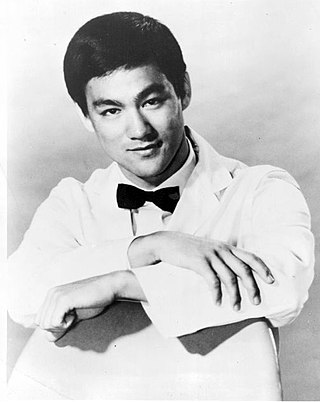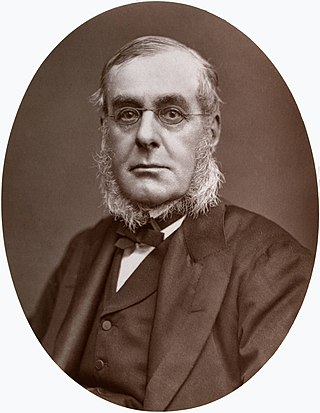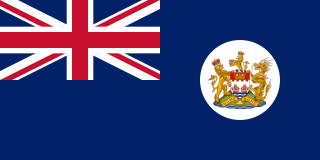
Crouching Tiger, Hidden Dragon is a 2000 wuxia martial arts adventure film directed by Ang Lee and written for the screen by Wang Hui-ling, James Schamus, and Tsai Kuo-jung. The film stars Chow Yun-fat, Michelle Yeoh, Zhang Ziyi, and Chang Chen. It is based on the Chinese novel of the same name, serialized between 1941 and 1942 by Wang Dulu, the fourth part of his Crane Iron pentalogy.

A dragon is a magical legendary creature that appears in the folklore of multiple cultures worldwide. Beliefs about dragons vary considerably through regions, but dragons in Western cultures since the High Middle Ages have often been depicted as winged, horned, and capable of breathing fire. Dragons in eastern cultures are usually depicted as wingless, four-legged, serpentine creatures with above-average intelligence. Commonalities between dragons' traits are often a hybridization of feline, reptilian, mammalian, and avian features. Scholars believe large extinct or migrating crocodiles bear the closest resemblance, especially when encountered in forested or swampy areas, and are most likely the template of modern Asian dragon imagery.

Bruce Lee was a Hong Kong-American martial artist and actor whose career spanned Hong Kong and the United States. He was the founder of Jeet Kune Do, a hybrid martial arts philosophy drawing from different combat disciplines that is sometimes credited with paving the way for modern mixed martial arts (MMA). Lee is considered by some commentators and martial artists to be the most influential martial artist of all time and a pop culture icon of the 20th century, who bridged the gap between East and West. He is credited with promoting Hong Kong action cinema and helping to change the way Chinese people were presented in American films.

Maelgwn Gwynedd was king of Gwynedd during the early 6th century. Surviving records suggest he held a pre-eminent position among the Brythonic kings in Wales and their allies in the "Old North" along the Scottish coast. Maelgwn was a generous supporter of Christianity, funding the foundation of churches throughout Wales and even far beyond the bounds of his own kingdom. Nonetheless, his principal legacy today is the scathing account of his behavior recorded in De Excidio et Conquestu Britanniae by Gildas, who considered Maelgwn a usurper and reprobate. The son of Cadwallon Lawhir and great-grandson of Cunedda, Maelgwn was buried on Ynys Seiriol, off the eastern tip of Anglesey, having died of the "yellow plague"; quite probably the arrival of Justinian's Plague in Britain.
Zhoushan Island is the principal and namesake island in the Zhoushan Islands, formerly romanized as the Chusan Islands, an archipelago administered by Zhoushan Prefecture in Zhejiang Province in the People's Republic of China. It is the province's largest island and 3rd-largest in mainland China after Hainan and Chongming. The island is the district seat of both Dinghai and Putuo. The island was the site of the first and second capture of Chusan during the First Opium War.
Laurence Michael Yep is an American writer. He is known for his children's books, having won the Newbery Honor twice for his Golden Mountain series. In 2005, he received the biennial Laura Ingalls Wilder Medal for his career contribution to American children's literature.
Grenadier Models Inc. of Springfield, Pennsylvania produced lead miniature figures for wargames and role-playing games with fantasy, science fiction and heroic themes between 1975 and 1996. Grenadier Models Inc. is best known for their figures for TSR, Inc.'s Advanced Dungeons & Dragons game, collectible Dragon-of-the-Month and Giants Club figures, and their marketing of paint and miniature sets through traditional retail outlets.
Theodore Edward Cantor (1809–1860) was a Danish physician, zoologist and botanist. He described several new species of reptiles and amphibians, and six species have been named in his honor.

Admiral Sir Richard Collinson was an English naval officer and explorer of the Northwest Passage.

George Smith was a missionary in China and the Bishop of Victoria from 1849 to 1865, the first of this newly established diocese.

Rosemary Joy Manning was a British writer of both adult and children's books. Her best-known novel is The Chinese Garden, an important British lesbian novel. She was also well known for her popular Dragon children's series. She was also known by the pseudonyms Sarah Davys and Mary Voyle.

Scooby-Doo! and the Samurai Sword is a 2009 direct-to-DVD animated comedy mystery martial arts film, as well as the thirteenth entry in a series of direct-to-video animated films based on the Scooby-Doo franchise. In the United States, the DVD sold over 163,890 units in its first week and as of January 2014, it has sold approximately over 524,725 units.

The SS Chusan was a British ocean liner and cruise ship, built for the Peninsular and Oriental Steam Navigation Company's Indian and Far East Service in 1950. She was named after Chusan, a small island off China. A smaller version of the SS Himalaya, the Chusan had a gross register tonnage of 24,215; and a capacity of 1,565 passengers and crew. She was built as a replacement for the RMS Viceroy of India, lost in the Second World War. She was 646.5 feet (197.1 m) long. The Chusan is said to have brought new standards of shipboard luxury to India and the Far East. She was the last passenger liner built for P & O by Vickers-Armstrongs.

The First Capture of Chusan by British forces in China occurred on 5–6 July 1840 during the First Opium War. The British captured Chusan (Zhoushan), the largest island of an archipelago of that name.

The China War Medal was issued by the British Government in 1843 to members of the British and Indian forces who took part in the First Opium War (1839–42). The medal was designed by William Wyon.

Hong Kong was a colony of the British Empire and later a dependent territory of the United Kingdom from 1841 to 1997, apart from a period of Japanese occupation from 1941 to 1945 during the Pacific War. The colonial period began with the British occupation of Hong Kong Island in 1841, during the First Opium War between the British and the Qing dynasty. The Qing had wanted to enforce its prohibition of opium importation within the dynasty that was being exported mostly from British India and was causing widespread addiction among the populace.

The second capture of Chusan occurred on 1 October 1841 during the First Opium War when British forces captured the city of Dinghai, capital of the Chusan (Zhoushan) islands off the east Chinese coast.

The Nerbudda incident was the summary execution of 197 personnel of the British transport ship Nerbudda and brig Ann in Taiwan on 10 August 1842 by Chinese officials during the First Opium War. An additional 87 prisoners died from ill treatment in Chinese captivity. In September 1841, the Nerbudda became shipwrecked off northern Taiwan near Keelung. In March 1842, the Ann became shipwrecked at Da'an harbour. Survivors from both ships—primarily Indian camp followers and lascars—were captured by Chinese forces and marched south to the capital of Taiwan Prefecture, where they were imprisoned before being beheaded by the Chinese. Out of the nearly 300 castaways who landed or attempted to land in Taiwan, only 11 survived captivity and execution. The Daoguang Emperor ordered the execution on 14 May 1842, after the British victory over Chinese troops at the Battle of Ningpo.

Lieutenant-General George Burrell was a British Army officer. He served in the Napoleonic Wars (1803–1815), War of 1812, and First Anglo-Chinese War (1839-1842).















